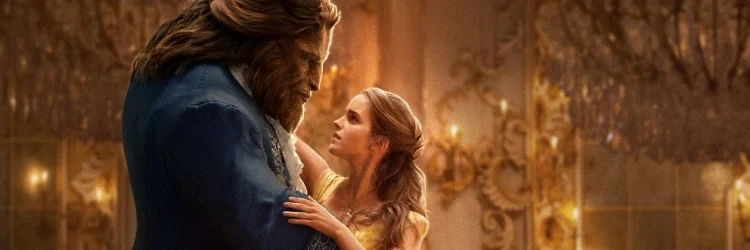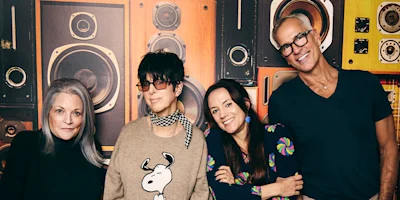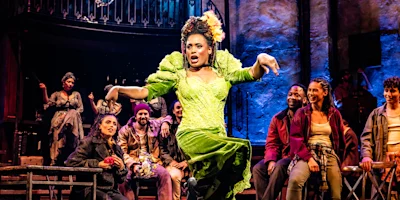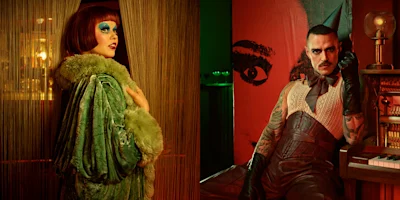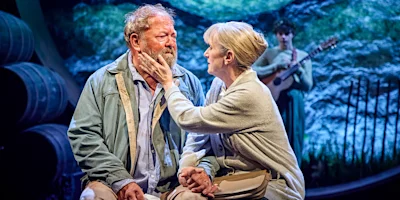
How Disney's Beauty and the Beast changed Broadway and Musical Theatre Forever
It may have been over a quarter of a century since Walt Disney's animated picture Beauty and the Beast stormed onto movie screens changing the face of the animation studio for years to come, but the effects of the movie continue to be felt in musical theatre around the world. With the new live-action remake opening in cinemas next week attention has once again been placed on this spectacular musical story with debate rising from the feminist nature of Disney Princesses to the studio's apparent first gay character in a mainstream picture. For fans of the film, Beauty and the Beast represents the cornerstone of the so-called 'Disney Renaissance' that stormed the 1990s, pushing these animated musicals into new realms of artistic credibility.
The 1991 animated film gained so much attention that it found itself nominated for the Academy Award for Best Picture, losing out to 'The Silence of the Lambs' but winning Best Original Score and Best Song - for which the songwriters Alan Menken and Howard Ashman received three nominations. The inherent musical potential of the film was not lost on critics with Chief Drama Critic of the New York Time Frank Rich describing it has "the best Broadway musical score of 1991" and better than anything that he had seen on Broadway that season. The glowing notice from the most esteemed voice of New York theatre helped boost the confidence behind the project of bringing the animated musical to the stage and whilst eyebrows were certainly raised from those in the community as well as the film studio itself, the commercial success of the megamusicals of the 1980s such as The Phantom of the Opera and Cats certainly displayed the success available if they formula were to work.

Production aside, Disney are often credited as playing an integral part in the efforts to clean up Times Square which began in the 80s with mayor Ed Koch and took on a new momentum with Rudy Giuliani throughout the 1990s. Known for its seedy sex shops and less than family-friendly atmosphere Giuliani took office in 1994 and introduced rezoning laws that began to change the landscape of the theatre district. Walt Disney swooped in with a low-rent loan and began to renovate the New Amsterdam Theatre in the heart of Times Square as well as taking out retail space in Times Square itself. Other companies took advantage of this vacuum and the physical landscape of Broadway began to gradually clean up its act, with it attracting tourists and perhaps more importantly, families to the heart of theatreland. The New Amsterdam Theatre was officially reopened on April 2, 1997 with the studios' most successful stage musical The Lion King playing to record crowds. The show transferred to the Minskoff Theatre in summer 2006, leaving the venue open to welcome Mary Poppins to Broadway in October of the same year.
Whilst these efforts were obviously welcomed by many, the theatre industry as a whole remained sceptical about Disney's overall intentions and as a project Beauty and the Beast was not wholly embraced by the Broadway community. The production played an out-of-town tryout in Houston, Texas in 1993, hundreds of miles from Broadway allowing it to open without scrutiny. Cast and creative team found themselves initially hesitant to sign on to the project without wanting to be part of what was ultimately seen as a huge risk and experiment - no one quite knew whether audiences would be interested in paying a significant amount of money to see a show they could already watch in the comfort of their own home for free.

The creative team itself expressed initial reservations, screenwriter Linda Woolverton was commissioned to adapt the film into a full length two-act Broadway music and was instructed to find depth and sense to characters that already lived in people's minds and more importantly their hearts. The success of the project as a stage musical relied heavily on composer Alan Menken who returned to the project without his writing partner Howard Ashman who had died of AIDS in 1991 before the completion of the original film. Paired with British lyricst Tim Rice both were nervous of the show appearing too similar to the 'Theme Park Shows' that Disney presented around the world, truncating their films into 60 minute live action performances as part of the live experience of the Park rather than with any solid theatrical integrity. Rice had come on board to work with Menken on 'Aladdin' (1992) adding to the work already done by Ashman, and with a rich background of creating Broadway hit musicals his contributions aided the overall musical texture of the score, especially in relation to character development.
Beauty and the Beast opened on Broadway at the Palace Theatre on 18 Aprl 1994 and ran at the venue to 5 September 1999 before transferring to the Lunt-Fontanne, where it finally closed on 29 July 2007 clocking up a staggering 5,461 performances. Despite the initial scepticism it is Broadway's tenth-longest running production and broke records at both venues for its long run. It may be hard to argue that the show changed the overall landscape of Broadway but there is no doubt that the success of Disney's first theatrical production changed the industry forever.
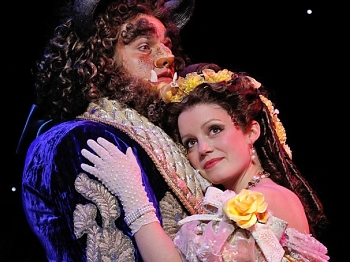
Production costs for the original production were estimated around $12 million, raising the bar for the level of spectacle expected by audiences on stage. After the 'boom' of the British invasion the decade before, audiences had become accustomed to the sets of John Napier and his contemporaries - sets and productions that were just as talked about as the show itself and other producers were forced to step up to compete in this similar playing field at a time where audiences seemed to favour the excesses of neo-liberalism and wanted to see their money on stage.
The musical's excess wasn't greeted with fantastic critical praise but critics were quick to point out that in this case their word may not make or break the show. David Richard of The New York Times described the musical as "hardly a triumph of art, but it'll probably be a whale of a tourist attraction", recognising that a new type of audience would no doubt embrace the show and not worry so much about dramaturgy, structure and the merits of the score. "The result is a sightseer's delight, which isn't the same thing as a theatergoer's dream" he concluded, but it hardly mattered - Disney, like Andrew Lloyd Webber and Cameron Mackintosh before them, had a critic-proof show on their hands and one that arrived with its own in-built audience.
The success inspired the studio to realise the stage potential of previous titles such as The Little Mermaid and Mary Poppins as well as future titles such as Aladdin, The Lion King and its latest Broadway show Frozen which is no doubt set to be one of next season's biggest hits. Aida showed an attempt to create an original musical with a fresh score by Elton John and Tim Rice, and Tarzan and The Lion King tapped into a vast creative potential bringing together some of theatre's greatest minds to realise these two dimensional worlds in fresh ways. Whilst Beauty and the Beast was on some levels an artistic experiment, the innovation of Julie Taymor's The Lion King and to a certain degree Tarzan showed that Walt Disney Theatricals were not adverse to exploring the legitimate theatre in a new way.

Perhaps most importantly Beauty and the Beast opened up a new market for Broadway that grew hand in hand with Disney and the city of New York's efforts to make Times Square a more family friendly place. The show appealed to a new, younger audience who weren't influenced by reviews in the New York Times - new marketing methods were developing thanks to the dawn of the internet and the highly visual nature of the shows that tapped into a pre-existing brand and vamped on the fact that most people would already come to the theatre with a knowledge and expectation of what they were going to see. On some level that attachment does a lot of the groundwork for you in terms of marketing, but creates heightened levels of expectation that can prove just as risky as seen in the relative failure of The Little Mermaid on Broadway and will be tested to the extreme come the opening of Frozen, the most successful animated movie of all time.
Musicals based on family friendly titles have soared in recent years, from Hairspray (2002) to Wicked (2003), Matilda (2013) and School of Rock (2015), all of which aim to create a 'feel-good' atmosphere that on some level emulate the film on screen and provide a comforting familiarity. Some have argued that the 13 year run of Beauty and the Beast saw a demise in the development of 'serious' musicals as Producers, eager to find new sources of successful investment followed suit to compete with what audiences were clearly wanting or as Dan Dietz, the author of The Complete Book of 1990s Broadway Musicals describes, "a theme park with a parade of musicals aimed at kids and teenagers."

The stage musical of Beauty and the Beast has been performed in over 30 countries worldwide and has been seen by over 35 million people, grossing in excess of $1.7 billion. It's success as a title is undeniable, and whilst it has its detractors the combination of talents pull together to make it one of the most important case studies of modern musical theatre. The new live action film adaptation may be seen as yet another way to 'cash-in' on an established brand, but for new audiences it offers a rediscovery of a beautiful score that allows it to live on as a piece of legitimate and ultimately important theatre.
Originally published on
